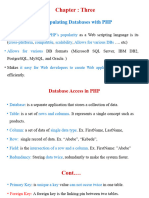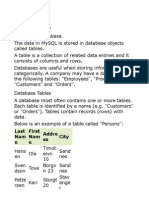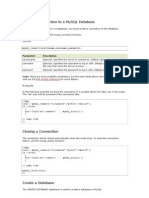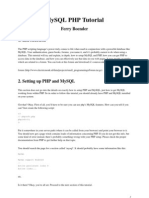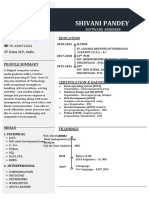0% found this document useful (0 votes)
77 views24 pagesLec 06 MySQL in PHP PDF
MySQL is a popular relational database system that stores data in tables with rows and columns. SQL is used to communicate with MySQL databases to perform tasks like creating/modifying tables and querying data. PHP can connect to MySQL using mysqli or PDO extensions. Data is retrieved from MySQL tables using the SELECT statement and inserted using the INSERT INTO statement by passing SQL queries to mysqli_query().
Uploaded by
Nixon PeraltaCopyright
© © All Rights Reserved
We take content rights seriously. If you suspect this is your content, claim it here.
Available Formats
Download as PDF, TXT or read online on Scribd
0% found this document useful (0 votes)
77 views24 pagesLec 06 MySQL in PHP PDF
MySQL is a popular relational database system that stores data in tables with rows and columns. SQL is used to communicate with MySQL databases to perform tasks like creating/modifying tables and querying data. PHP can connect to MySQL using mysqli or PDO extensions. Data is retrieved from MySQL tables using the SELECT statement and inserted using the INSERT INTO statement by passing SQL queries to mysqli_query().
Uploaded by
Nixon PeraltaCopyright
© © All Rights Reserved
We take content rights seriously. If you suspect this is your content, claim it here.
Available Formats
Download as PDF, TXT or read online on Scribd
/ 24


























